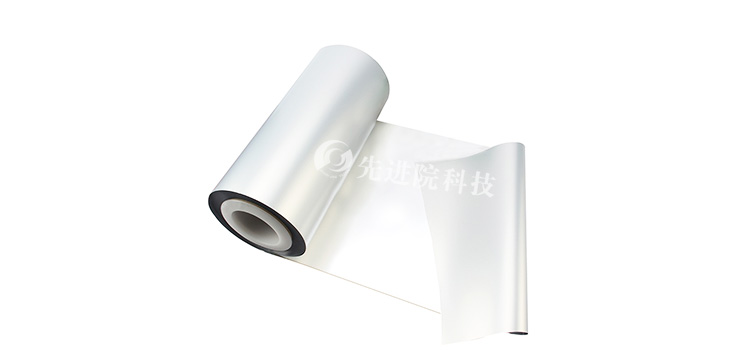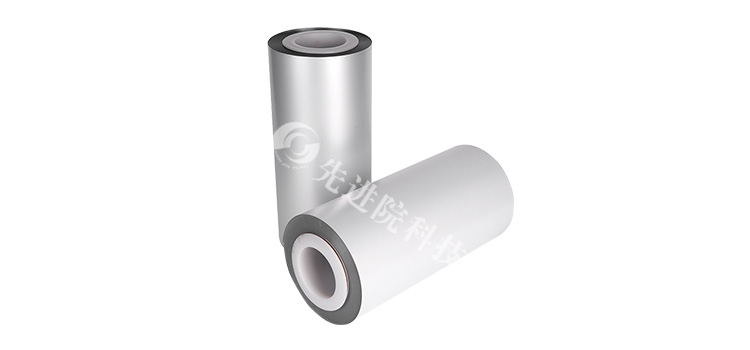PI (polyimide) aluminum plated film plays an important role in modern technology and industrial applications as a high-performance material. There is a close relationship between its surface hardness and the crystalline state of the aluminum layer, which not only affectsPI aluminum plated filmThe physical performance also determines its performance in various application scenarios. This article will delve into the correlation between the surface hardness of PI aluminum plated film and the crystallization state of the aluminum layer, and analyze the factors that affect the crystallization state of the aluminum layer.
1、 The influence of aluminum layer crystallization state on surface hardness
The crystalline state of the aluminum layer, that is, the degree of ordered arrangement of aluminum atoms in the coating, is the key factor determining the surface hardness of PI aluminum plating film. The higher the crystallinity of the aluminum layer, the greater the number of crystal phases, the larger the crystal particle size, and the ordered arrangement of crystals. This ordered crystal structure can more effectively resist external mechanical effects such as scratches, indentations, etc., thereby improving the surface hardness of PI aluminum coating.
-
Crystallinity and hardness: Aluminum layers with high crystallinity have tighter and more ordered arrangement of aluminum atoms, resulting in a more stable coating structure, and therefore typically higher surface hardness. On the contrary, aluminum layers with low crystallinity have relatively loose and disordered arrangement of aluminum atoms, and the coating structure is not stable enough, which is easily damaged by external factors and leads to a decrease in surface hardness.
-
Grain size and hardness: Grain size is also an important factor affecting surface hardness. The smaller the grain size, the more grain boundaries there are per unit area, and the stronger the hindering effect of grain boundaries on dislocations, resulting in higher surface hardness. If the grain size is too large, it may lead to more defects and stress concentration points inside the coating, reducing the surface hardness.
-
Crystal morphology and hardness: The crystal morphology of aluminum layers (such as columnar crystals, equiaxed crystals, etc.) also affects their surface hardness. Different crystal morphologies can lead to structural differences within the coating, thereby affecting its mechanical properties. For example, aluminum layers with columnar crystal structures may have higher strength and hardness due to stronger bonding between their grains.

2、 Factors affecting the crystallization state of aluminum layer
The crystalline state of the aluminum layer is influenced by various factors, including aluminum plating process parameters, substrate selection, and post-treatment processes.
-
Aluminum plating process parameters: The process parameters during aluminum plating, such as vacuum degree, evaporation temperature, evaporation rate, etc., will have an impact on the crystallization state of the aluminum layer. The level of vacuum determines the number of gas molecules during the aluminum plating process, which in turn affects the deposition rate and arrangement of aluminum atoms. The evaporation temperature and evaporation rate determine the energy state of aluminum atoms, thereby affecting their deposition and crystallization processes on the surface of PI thin films. By optimizing these process parameters, an aluminum layer with ideal crystalline state and high hardness can be obtained.
-
Substrate selection: The quality and flatness of PI substrate can also affect the crystalline state of the aluminum layer. High quality PI substrates have better surface smoothness and chemical stability, which helps to form a uniform and dense aluminum layer. In addition, the hardness, toughness, and other properties of the PI substrate also affect the crystalline state of the aluminum layer after aluminum plating. Therefore, when selecting PI substrates, it is necessary to comprehensively consider their physical properties and chemical stability to ensure the acquisition of high-quality aluminum plated films.
-
Post treatment process: The post-treatment process after aluminum plating, such as cooling, curing, etc., can also affect the crystalline state of the aluminum layer. Appropriate post-processing techniques can ensure good bonding between the aluminum layer and the PI substrate, and improve the crystallinity and hardness of the aluminum layer. For example, by controlling the cooling rate and solidification temperature, the crystal morphology and grain size of the aluminum layer can be optimized, thereby improving its surface hardness.

3、 Application and Prospect of PI Aluminum Coating
PI aluminum plated film has attracted much attention due to its excellent physical properties and wide range of application fields. Its high strength, high temperature resistance, wear resistance and other characteristics make it an ideal choice for flexible display devices, solar cell backsheet materials and other fields. With the continuous advancement of technology and the increasing awareness of environmental protection,PI aluminum plated filmThe production and application will pay more attention to technological innovation and environmental protection requirements.
-
Technological innovation: In the future, PI aluminum coating technology will develop towards improving the adhesion and uniformity of coatings, reducing production costs, and other directions. By optimizing the parameters of aluminum plating process, developing new substrates and post-treatment processes, the surface hardness and comprehensive performance of PI aluminum plating film can be further improved.
-
Environmental requirements: With the increasing awareness of environmental protection, the production of aluminum plated films in the future will pay more attention to the development and application of environmentally friendly materials and processes. PI aluminum plated film, as a high-performance and environmentally friendly material, will demonstrate its unique charm and value in more fields.
4、 Conclusion
The surface hardness of PI aluminum plated film is closely related to the crystalline state of the aluminum layer. Aluminum layers with high crystallinity typically have higher hardness and wear resistance, providing better mechanical protection. In order to obtain an aluminum layer with ideal crystalline state and high hardness, it is necessary to strictly control the aluminum plating process parameters, select suitable substrates, and optimize the post-treatment process. With the continuous advancement of technology and the increasing demand for environmental protection, PI aluminum plated film will demonstrate its excellent performance and broad application prospects in more fields.
The above data is for reference only, and specific performance may vary due to production processes and product specifications.






